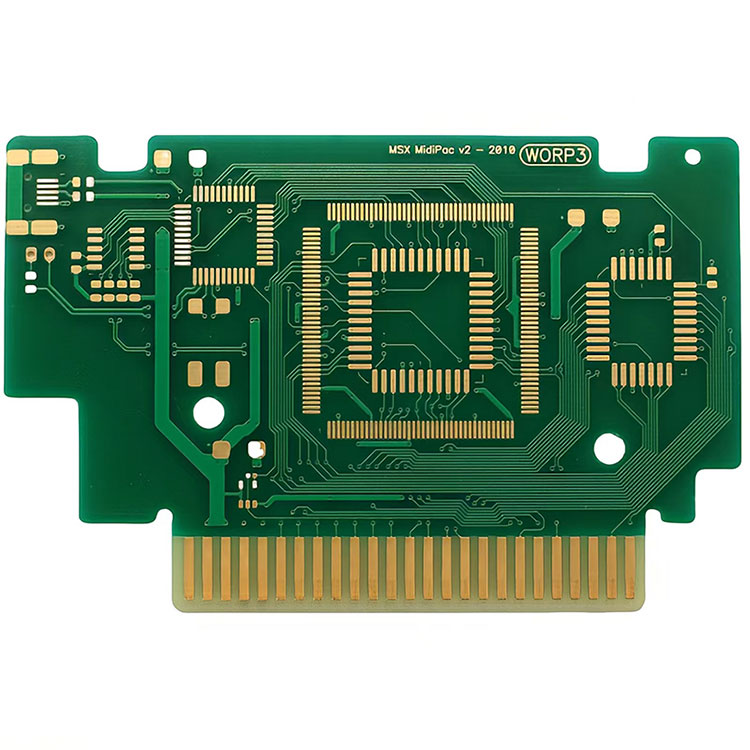Design Considerations for Multilayer Boards
2024-06-06
A multilayer board, also known as a multilayer printed circuit board (PCB), is a type of PCB that consists of multiple layers of conductive traces separated by insulating layers (substrates). These boards are commonly used in electronic devices and systems where a high level of circuit integration and complexity is required. Here's an overview of multilayer boards:
Key Features of Multilayer Boards
1. Layer Structure:
- Multilayer boards consist of multiple layers of conductive traces and insulating layers sandwiched together. The number of layers can vary depending on the complexity of the circuit and the specific application.
2. Conductive Traces:
- Copper traces are etched onto each layer of the board to create electrical connections between components. These traces form the wiring network that carries signals and power throughout the circuit.
3. Insulating Layers:
- Insulating layers, also known as substrates or dielectric layers, are made of materials such as fiberglass, epoxy resin, or polyimide. They provide mechanical support and electrical insulation between adjacent conductive layers.
4. Vias:
- Vias are plated-through holes that connect the conductive traces between different layers of the board. They allow signals and power to pass vertically through the board, enabling complex routing and interconnection of components.
5. Component Mounting:
- Multilayer boards support surface-mount and through-hole component mounting techniques, allowing for the integration of a wide range of electronic components such as integrated circuits (ICs), resistors, capacitors, and connectors.
6. Complexity and Integration:
- Multilayer boards offer higher levels of circuit integration and density compared to single or double-sided PCBs. They are capable of supporting complex circuits with multiple signal layers, power planes, and ground planes.
Advantages of Multilayer Boards
1. Compact Design:
- Multilayer boards allow for higher component density and more compact designs, making them ideal for space-constrained applications such as smartphones, tablets, and computer motherboards.
2. Reduced Signal Interference:
- By utilizing multiple signal layers and separating power and ground planes, multilayer boards can minimize signal interference and crosstalk, leading to improved signal integrity and reliability.
3. Enhanced Performance:
- Multilayer boards provide better electrical performance, shorter signal paths, and reduced impedance compared to single or double-sided PCBs, resulting in higher-speed and more reliable circuit operation.
4. Increased Routing Flexibility:
- With multiple layers and vias, multilayer boards offer greater routing flexibility and design freedom, allowing for more complex and optimized circuit layouts.
5. Improved Thermal Management:
- Multilayer boards can incorporate thermal vias and heat sinks to dissipate heat more effectively, helping to prevent overheating and prolonging the lifespan of electronic components.
Applications of Multilayer Boards
1. Consumer Electronics:
- Smartphones, tablets, laptops, digital cameras, and other portable devices benefit from the compact size and high performance of multilayer boards.
2. Telecommunications:
- Networking equipment, routers, switches, and communication devices rely on multilayer boards for high-speed data transmission and reliable connectivity.
3. Computing:
- Computer motherboards, server boards, and high-performance computing systems utilize multilayer boards for their complex circuitry and high-speed processing capabilities.
4. Automotive Electronics:
- Automotive control units, navigation systems, infotainment systems, and engine management systems incorporate multilayer boards for their robustness and reliability in harsh environments.
5. Industrial Electronics:
- Automation systems, industrial controllers, power supplies, and instrumentation equipment benefit from the compact design and high-performance features of multilayer boards.
Design Considerations for Multilayer Boards
1. Layer Stackup:
- Determine the optimal layer stackup based on signal integrity, power distribution, and thermal management requirements.
2. Signal Integrity:
- Minimize signal distortion, impedance mismatches, and electromagnetic interference (EMI) by carefully designing signal traces and ground/power planes.
3. Thermal Management:
- Ensure adequate heat dissipation through the use of thermal vias, heat sinks, and proper component placement to prevent overheating and ensure reliable operation.
4. Component Placement:
- Optimize component placement to minimize signal path lengths, reduce noise, and improve overall circuit performance.
5. Manufacturability:
- Consider manufacturability factors such as layer registration, via drilling, and impedance control to facilitate the fabrication and assembly of multilayer boards.
Conclusion
Multilayer boards play a crucial role in modern electronic systems, providing compact, high-performance solutions for a wide range of applications. By leveraging multiple layers of conductive traces and insulating substrates, multilayer boards offer enhanced circuit integration, improved signal integrity, and greater design flexibility, making them indispensable in today's electronics industry.



